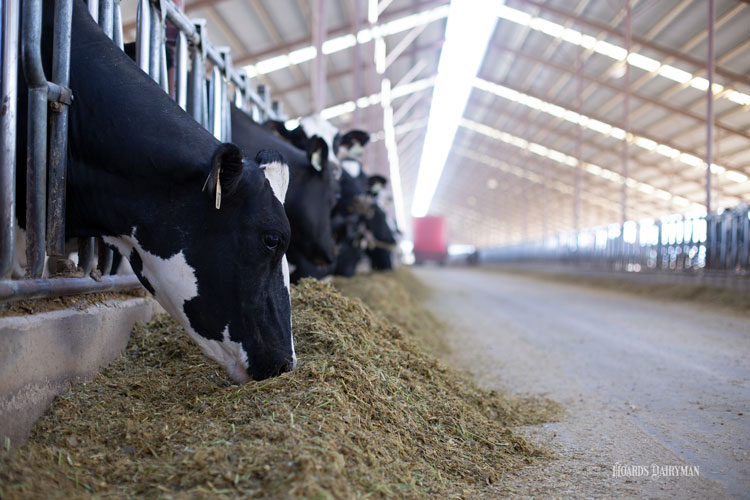
“Don’t let the abnormal become normal. Just because it happened yesterday, today, and tomorrow doesn’t mean it’s right,” opened independent nutritionist David Greene during his presentation at the Western Dairy Management Conference.
In Greene’s 20 years of providing nutritional services, it is this sentiment that he often shares with dairies looking to improve their nutrition program. For those looking to do so, he shared these six key areas to consider:
- Implement an effective and efficient feeding schedule.
- Maintain equipment.
- Properly design/reorganize your feed center area.
- Minimize shrink.
- Frequent push-ups.
- Have a monitoring system.
An effective and efficient feeding schedule takes into account consistency, timing related to parlor visits, and cow behavior. All are important factors to identifying the best feeding schedule for your herd, shared Greene.
Further, equipment must work properly. The mixer should be properly filled so that feed is mixed quickly and consistently. Greene showed several examples of mixers that weren’t successfully mixing feed.
He also showed several pictures of design concepts for feed centers. In designing over 200 feed centers, he has found that staging feeds and equipment in zones creates the most efficiency. “The feed centers that I have done resulted in a two to three year payback. Now, to be fair, we were making vast improvements from the previous situation,” said Greene.
Shrink prevention has also been a focal area for Greene’s nutrition work. “Shrink is the No. 4 or 5 expense on the farm. It’s a big deal. It occurs from the forage field all the way to the bunk,” the Tennessee nutritionist told the audience.
Finally, Greene spent a few minutes on feed push-up and availability for the cows. He suggested pushing feed up every one to one and a half hours. That frequency allows feed to be available for all cows, increasing number of visits to the bunk and reducing slug feeding.
“We have to push and roll feed,” he said. “You can’t just push feed to the curb and think that it’s good.” Greene’s suggestion allows feed to be reblended and remixed for optimal consistency.








